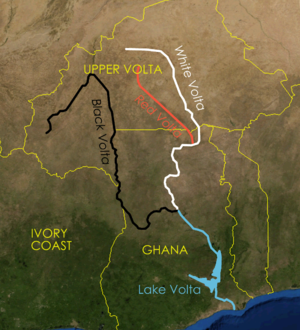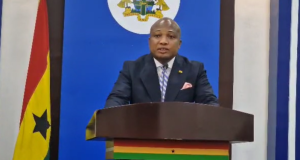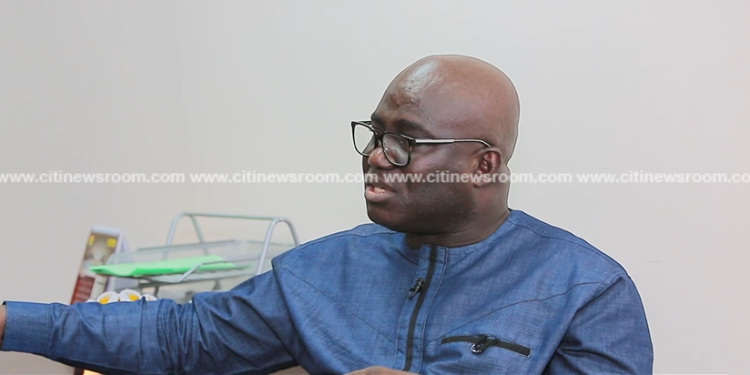A Water Quality Assessment conducted on the largest water body in Northern Ghana, the White Volta has revealed that the river is highly polluted with heavy metals, including Mercury Copper, Zinc Cadmium, and Lead among other chemical contaminants.
This is as a result of illegal mining activities taking place in communities bordering the White Volta in the northern part of Ghana.
The present state of the White Volta could put the health of thousands of people living and utilizing the water resources at risk of contracting different kinds of diseases.
The study cautioned that the raw use of the investigated water can pose health risks to humans, especially infants, the Aged, and immune-compromised persons.
The research by TAMA Foundation Universal, a Policy, Research, and Advocacy Think Tank based in Northern Ghana with technical support of the Water Research Institute of CSIR showed high levels of lead, iron mercury, cadmium, chemical oxygen, arsenic, and manganese in the river.
The research, funded by Ford Foundation and carried out over two months in mining-affected areas in the five regions of the north established that there were chemical oxygen demand levels of 1135mg/l; Iron 0.977mg/l; manganese 2.635mg/l; arsenic 1.45mg/l; cadmium 0.132mg/l and chromium 0.8mg/l, as against 250, 0.3: 10, 0.4, 0.010: 1.0, 0.003: 0.1 and 0.05: 0.1 recommended levels by the World Health Organisation (WHO) and Environmental Protection Agency (EPA) respectively.
“Chemical contaminants, particularly metals, were identified in nearly all samples from
washing sites and recorded levels exceeding limits of EPA: Pb(0.028 mg/l), Cd(3.55
mg/L), As(0.16 mg/l), Cr(2.3 mg/l), Hg(0.021 mg/l) and CN(0.17 mg/l). However, lower
levels of heavy metals were recorded in boreholes and mining pits.
“The potential risks posed to both human health and the environment through prolonged exposure to these heavy metals is anticipated in the future by miners from skin exposure,” the study cautioned.
The findings from the assessment were presented to key stakeholders drawn from Ministries, Departments, Agencies, local authorities, CSOs, youth groups, and the media at a High- high-level forum held in Tamale in the Northern Region.
In a presentation, Ms Zita Naangmenyele Abuntori, a Research scientist at the Water Research Institute of CSIR explained that the study was to evaluate the environmental and health implications of illegal mining activities on water quality in affected mining communities.
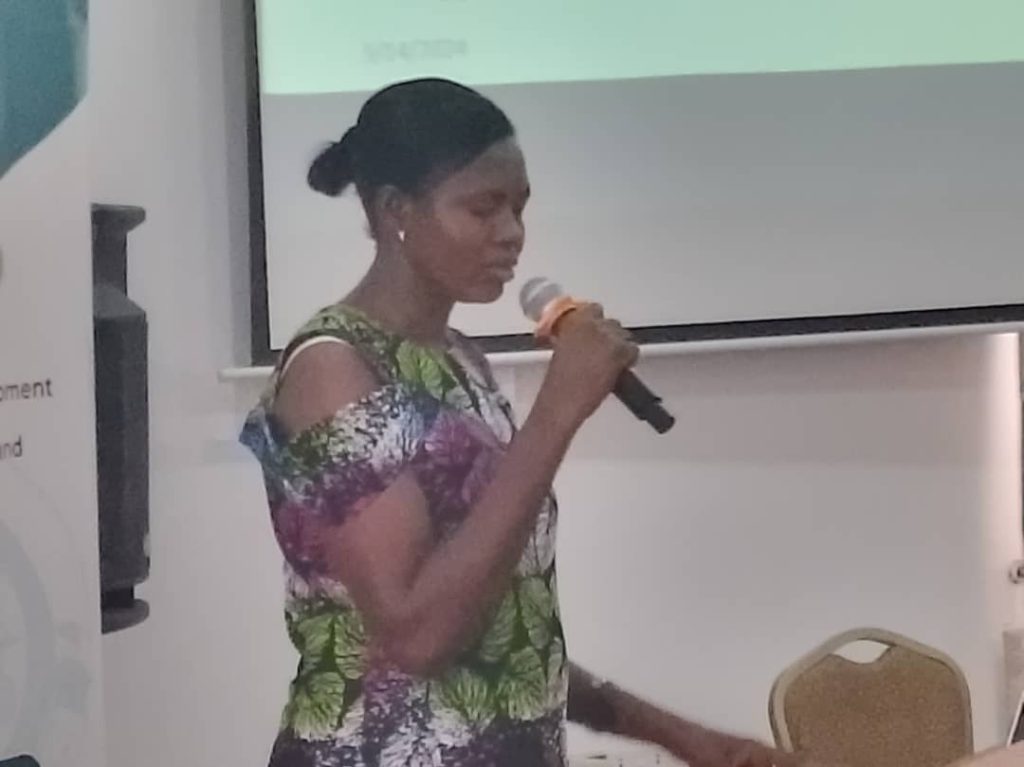
Ms Zita Naangmenyele Abuntori, a Research Scientist at the Water Research Institute of CSIR
She said comprehensive physico-chemical analyses and heavy metal assessments were carried out on water samples obtained from various mining sites and the findings unveiled diverse contaminant levels among all samples, with borehole samples generally exhibiting lower levels in contrast to those from mining pits and washing sites.
Ms Abuntori, further elaborated, ‘We proceeded to test the largest water body around northern Ghana which is the White Volta we found some residue of mercury in the White Volta above the WHO guide. It is not supposed to be above 0.006 but we are seeing somewhere 0.008.
“For us as a scientific body, we are seeing it as an amber already that, something is going on; it might not be up to the level of what we are seeing in the southern waters but it is showing that it is there. So from our research, there are presents of these elements in higher concentration in the water bodies that we tested.
Among other recommendations, she encouraged the TAMA Foundation to keep on with the research, especially with a major follow-up on regular monitoring of the white Volta since is the major water source in northern Ghana.
Mr Charles Abugre, Board Chairman of TAMA Foundation Universal in his welcome remarks said there was time when nobody associated the northern part of Ghana with mineral resources.
He noted that a bit of geological work done in recent times demonstrates that the northern part of the country has a lot of mineral resources, particularly precious minerals such as Gold and some other industrial minerals like Clay, Limestone among others.
He said the extraction of these minerals comes with a lot of destruction to the environment and thus, there is a need to minimize the harm to the environment and optimize the benefits of the mineral extraction.
He thanked the intuitions for partnering with the TAMA Foundation to put out the Reports
I on behalf of the Board of TAMA thank those who have collaborated in the various research and appreciate TAMA management for the approach of working with the appropriate government agencies such as the Water Research Institute and the University of Development Studies. That partnership is the way to go.
“So I would like to congratulate the experts who helped to develop these reports that we are presenting today and hope that we have very productive deliberation to help make the Report better.”
Speaking to the Media on the sidelines of the workshop, Dr Chrys Anab, Executive Director of TAMA Foundation Universal acknowledged that though mining can potentially create jobs and economic livelihood for certain people, his outfit is very worried about some of the environmental challenges and how mining activities are brewing conflicts and instability in some mining communities in the North.
Dr Anab noted that “there are also issues about mining beginning to pollute the water bodies. Water is a critical resource, so if water bodies are being polluted, then we have a big issue and this is the time to confront the issues rather than waiting till the problem is terrible for everybody.”
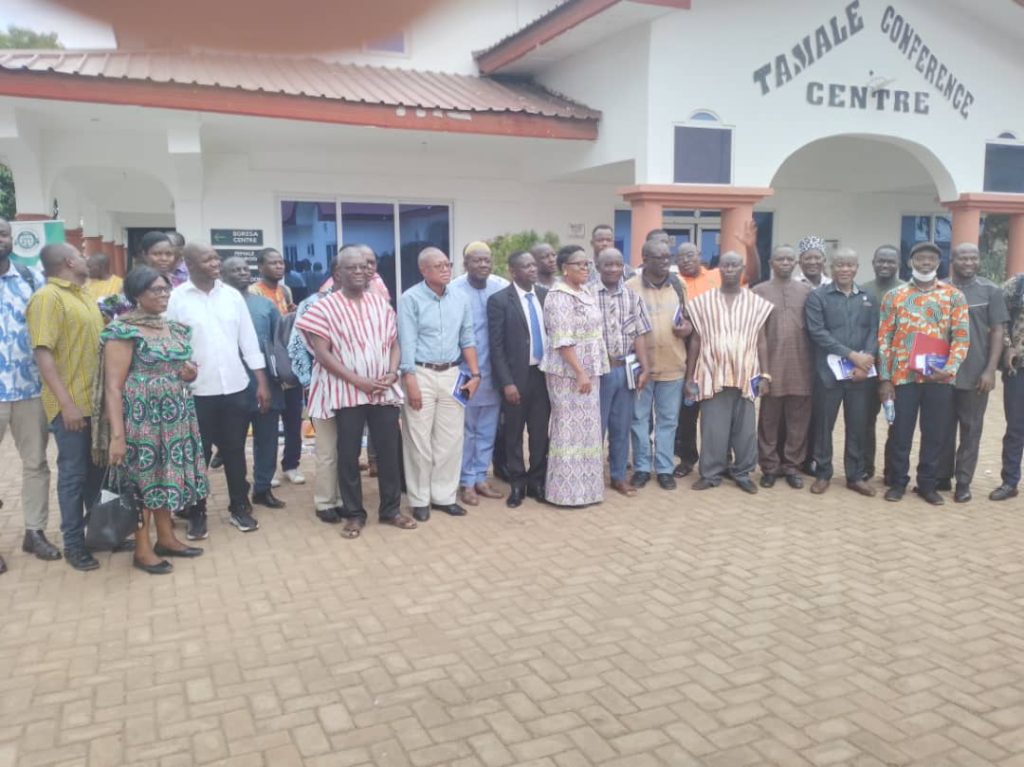
A group Photograph of Participants at the workshop
Participants hailed the quality of the research, maintaining that the findings of the study depict the reality on the grounds.
By: Mohammed Suleman/Publicagenda.news
 Public Agenda NewsPaper Ghana's only Advocacy & Development Newspaper
Public Agenda NewsPaper Ghana's only Advocacy & Development Newspaper

